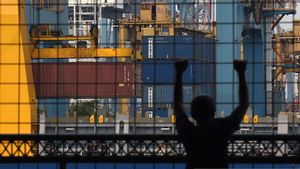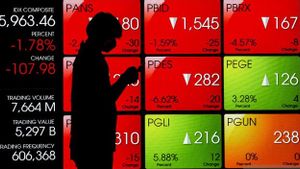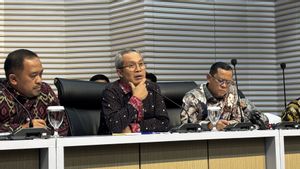YOGYAKARTA - Business risks are the variability businesses feel within a certain period of time in their income. Some companies, such as utility companies, have a relatively stable income pattern over time. They can predict how much their customer utility bills are in a certain range. Other types of business companies have more variability in their income over time. You can use this formula to see the influence of fixed costs, variable costs, sales, and debts to your business. Let's learn how to compute business risks...
Another way to think about business risks is the demand for company products. Using the example of car manufacturers again, in the economic downturn, consumers do not have much demand for company products. When product demand is low, it causes revenue to decline, and business risks are increased.
Business risks are related to the company's fixed costs. Fixed costs must always be paid, regardless of the company's income. The higher the company's fixed cost rate, the higher the risk of its business.
There are four financial ratios that business owners or financial managers can use to calculate the business risks the company faces.
Contribution Margin Ratio
The ratio of the contribution margin is the margin of contribution as a percentage of total sales. The contribution margin is calculated as the sales minus variable cost. The ratio of the contribution margin is calculated as:
(Net Sales Revenue - Variable Costs) / (Sales Income)
Once you reduce the cost of making a product and the cost of continuing to run a business, you can see how much you can earn per product.
Operation Leverage Level
The level of operating leverage, or DOL, is the ratio of financial efficiency that measures whether the cost of a variable or fixed company is higher.
DOL = [Varred Fee per Unit)] / Quantity x (Harga Variable Fee per Unit) Fixed Operating Fee
DOL = % Business Profit Change / % Sales Change
Margin Contribution / Operating Revenue
Low-DOL usually means the cost of a business variable is greater than the fixed cost, while high-DOL means the fixed cost is higher than the cost of the variable. If the variable costs are higher, a large increase in sales will not lead to a substantial increase in operating income. However, the company does not need to budget for a large fixed cost.
Leverage Finansial Level
In short, the level of financial leverage (DFL) measures the amount of debt held by business companies. Debt creates additional business risks for the company if income varies because debt must be paid. In other words, if a company uses debt financing, it must pay interest on the debt regardless of its income. We can also say that it measures the financial risks of a business company.
The formula can be calculated in the following way:
DFL = % Changes in Net Profit / % Changes in Profit Before Interest and Tax (EBIT)
DFL = % Profit Change per Share (EPS) / % EBIT Change
DFL = EBIT / (EBIT - Bunga)
If the ratio is 1.00, then the company has no debt.
Total Leverage Level
Formulas for the degree of total leverage (DTL) calculate how much unit sales will affect your business net profit or net profit per share of your business.4 You can calculate the formula this way:
DTL = DOL x DFL
This formula can also show you how much increase in revenue should increase profit per share.
Most Asked
What Financial Ratios are USED to Measure Risks?
You can measure your business risk using the contribution margin ratio, operating leverage effect ratio, financial leverage ratio, and combined leverage ratio. This ratio uses fixed fees, debt, and sales of your business to calculate business risks.
What's Formula To Calculat Risks?
Risks can be calculated by multiplying the possibility of risk and potential severity of these risks. Formulas that you can use to measure risk in any scenario are:
Risk = Possibility x
So after knowing how to calculate business risks, watch other interesting news on VOI, it's time to revolutionize news!
The English, Chinese, Japanese, Arabic, and French versions are automatically generated by the AI. So there may still be inaccuracies in translating, please always see Indonesian as our main language. (system supported by DigitalSiber.id)













